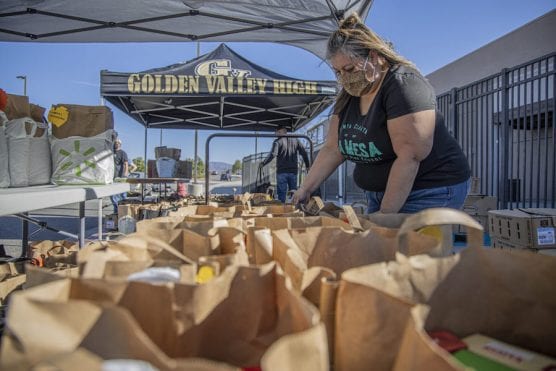A year of economic instability has exacerbated numerous issues across the Santa Clarita Valley, especially for students identified as homeless.
Whether living in a vehicle, motel or hotel, or someone living with friends or relatives outside of a regular home, being “homeless” refers to any student whose living situation is considered inadequate. Any of these situations create stability challenges for students, which also can impact learning, according to education officials.
“It also includes the families who are doubled up, who just don’t have a home of their own,” explained Kimberly LePage, a district administrator with the Castaic Union School District. “They could be living in someone else’s house, in their garage, it could be a trailer … it means a variety of things.”
At the William S. Hart Union High School District, 769 students currently have been identified as homeless.
“Every day, we keep identifying more students, so I’m sure by the end of the school year, this number is going to grow,” said Elizabeth Orozco, Hart district school social worker for Placerita Junior High School and Hart High School.
Similarly, the need has expanded at the Newhall School District, according to Gina Rodriguez, district liaison and resource specialist, who said the district currently has approximately 160 homeless students.
“The pandemic hit everybody hard, but our families that are most vulnerable, they’ve been really struggling,” Rodriguez said. “Everyone’s taken financial hit and a social-emotional hit in all of this, but our families (in need) are taking it on another level.”
The Castaic district is working toward creating a housing survey to identify more families in need of assistance, which LePage said she expects to lead to a rise in the district’s homeless figures, as well.
“If it’s one or 100, we work really hard to address their needs,” LePage added. “Our goal is always to get them equal access to everything that all of our students have.”
While most districts’ main goal in identifying homeless students is addressing school attendance and any barriers that may be present, it’s really all about ensuring each students’ basic needs are met, according to Ana Ayala, Hart district school social worker for Sierra Vista Junior High School and Canyon High School.
Many of the districts have resource centers, filled with donations, such as school supplies, clothing, canned foods and other household items, for families in need.
“That’s really where we try to reach out to the community for help,” Ayala said, adding that many of the districts rely on community donations for these items.
In addition, school officials have been working through the pandemic to continue meeting students’ needs, whether it be with technologic inequities or housing instability.
While school supplies, clothing and food made up the majority of these basic-needs requests prior to the pandemic, school officials agreed that now families need more financial assistance, as many are unable to pay their rent, with bills piling up.
“We constantly keep coming across families that need that extra support until they get back on their feet and so they can keep a roof for their children,” Orozco said. “It has been a struggle to keep up with the needs, especially for some of our social workers, because the district has seven school social workers. … It’s hard to keep up.”
While there’s been a few instances where, because of the distance learning, teachers have been given a window into the living situation that some of the kids have, Rodriguez noted, others haven’t been as lucky.
School officials agreed the biggest challenge comes in identifying these families in the first place. Many of them struggle with coming forward and asking for help. Ayala and LePage said that aspect makes forging relationships with these students and their families all the more important.
“We’re all about building relationships, in order to build trust,” LePage added.
Much of this comes from close collaboration with staff, including teachers and counselors, who may have better connections with students, added Ayala.
Community nonprofit organizations have been of tremendous help in supporting the districts and their families in need, all agreed.
There are a number of government agencies, community organizations and churches with ways to support homeless students. The Rotary Club of SCV sponsors Hart district students and their families. The Assistance League’s Operation School Bell provides school supplies and clothing for students. School Day Café provides drive-thru meal services for students through the pandemic. While many of the schools accepting donations, too, school officials recommend those who’d like to help reach out to their local schools or districts to learn more.
“Santa Clarita Valley is a close-knit community for as big as we are,” LePage added. “There are a lot of resources out there.”
Like this:
Like Loading...
Related





 Tweet This
Tweet This Facebook
Facebook Digg This
Digg This Bookmark
Bookmark Stumble
Stumble RSS
RSS


























REAL NAMES ONLY: All posters must use their real individual or business name. This applies equally to Twitter account holders who use a nickname.
0 Comments
You can be the first one to leave a comment.